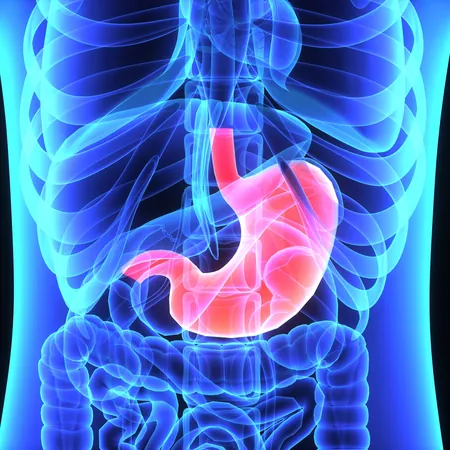
The Hidden Dangers of Ultraprocessed Foods: What You Need to Know for Better Health
2025-08-08
Author: Nur
Ultraprocessed Foods: The New Health Threat
Ultraprocessed foods (UPFs) are becoming a significant health concern as they infiltrate our diets. Common staples, particularly in the U.S., are laden with harmful ingredients like saturated fats, added sugars, and sodium—collectively referred to as HFSS—which contribute to excessive calorie consumption. These items range from sugar-sweetened beverages and processed meats to refined grains and flashy desserts.
Interestingly, a few UPFs, like certain whole-grain products, can offer nutritional benefits, leading to confusion among healthcare professionals and consumers alike.
A Wake-up Call from Experts
A recent Science Advisory by the American Heart Association casts light on the troubling association between UPFs and cardiometabolic health. Titled "Ultraprocessed Foods and Their Association with Cardiometabolic Health: Evidence, Gaps and Opportunities," this advisory published in Circulation, highlights essential areas for research and potential policy reforms aimed at improving dietary habits.
Maya K. Vadiveloo, chair of the advisory group, remarked, "While consuming high levels of saturated fats, added sugars, and salts is harmful, the complexity of how certain ingredients and processing methods impact health remains elusive."
The Alarming Rise of UPF Consumption
Since the 1990s, the prevalence of UPFs has soared, radically changing our eating patterns with predicted detrimental effects on our health. A staggering 70% of grocery products in the U.S. contain at least one ultraprocessed element. Recent CDC data confirms that UPFs make up 55% of daily calorie intake across all ages, jumping to 62% for youth aged 1 to 18. Alarmingly, low-income families consume a higher percentage of these calorie-dense foods—54.7% versus 50.4% for wealthier households.
Why Are UPFs So Popular?
UPFs are prized for their affordability, convenience, and aggressive marketing techniques, especially directed at youth and low-income communities. This trend has led to a downward spiral in nutritional quality and a sharp misalignment with recommended dietary guidelines from the American Heart Association.
Guidelines for a Healthier Diet
To combat UPF-related health risks, the American Heart Association recommends: - Reducing the intake of most UPFs, particularly those rich in unhealthy fats, sugars, and sodium. - Swapping UPFs for healthier choices, including fruits, vegetables, whole grains, legumes, nuts, seeds, and lean proteins.
What Exactly Are Ultraprocessed Foods?
Defined as multi-ingredient products packed with additives—many of which enhance shelf life and flavor—UPFs diverge sharply from what we typically make at home. The Nova system is a key framework for classifying these foods based on their level of industrial processing, although it overlooks the nutritional quality.
The Health Impact of UPFs
Research shows an alarming correlation between UPF consumption and serious health events, including heart attacks, strokes, Type 2 diabetes, and an increase in overall mortality risk. High UPF intake may raise these risks by astonishing amounts, prompting calls for more research to determine safe consumption levels.
A Call to Action for Research and Policy Reform
To counteract the health risks linked to UPFs, experts advocate for initiatives that promote healthy eating patterns and comprehensive policy changes, including better labeling of food products. Furthermore, enhanced funding for research is crucial to decode the intricate relationship between ultraprocessing and health.
"Ultimately, we need to further investigate what makes UPFs detrimental to health," Vadiveloo stated. "In the meantime, we strongly encourage people to minimize their intake of harmful UPFs in favor of a diet filled with wholesome, nutrient-dense foods for more sustainable health outcomes."




 Brasil (PT)
Brasil (PT)
 Canada (EN)
Canada (EN)
 Chile (ES)
Chile (ES)
 Česko (CS)
Česko (CS)
 대한민국 (KO)
대한민국 (KO)
 España (ES)
España (ES)
 France (FR)
France (FR)
 Hong Kong (EN)
Hong Kong (EN)
 Italia (IT)
Italia (IT)
 日本 (JA)
日本 (JA)
 Magyarország (HU)
Magyarország (HU)
 Norge (NO)
Norge (NO)
 Polska (PL)
Polska (PL)
 Schweiz (DE)
Schweiz (DE)
 Singapore (EN)
Singapore (EN)
 Sverige (SV)
Sverige (SV)
 Suomi (FI)
Suomi (FI)
 Türkiye (TR)
Türkiye (TR)
 الإمارات العربية المتحدة (AR)
الإمارات العربية المتحدة (AR)